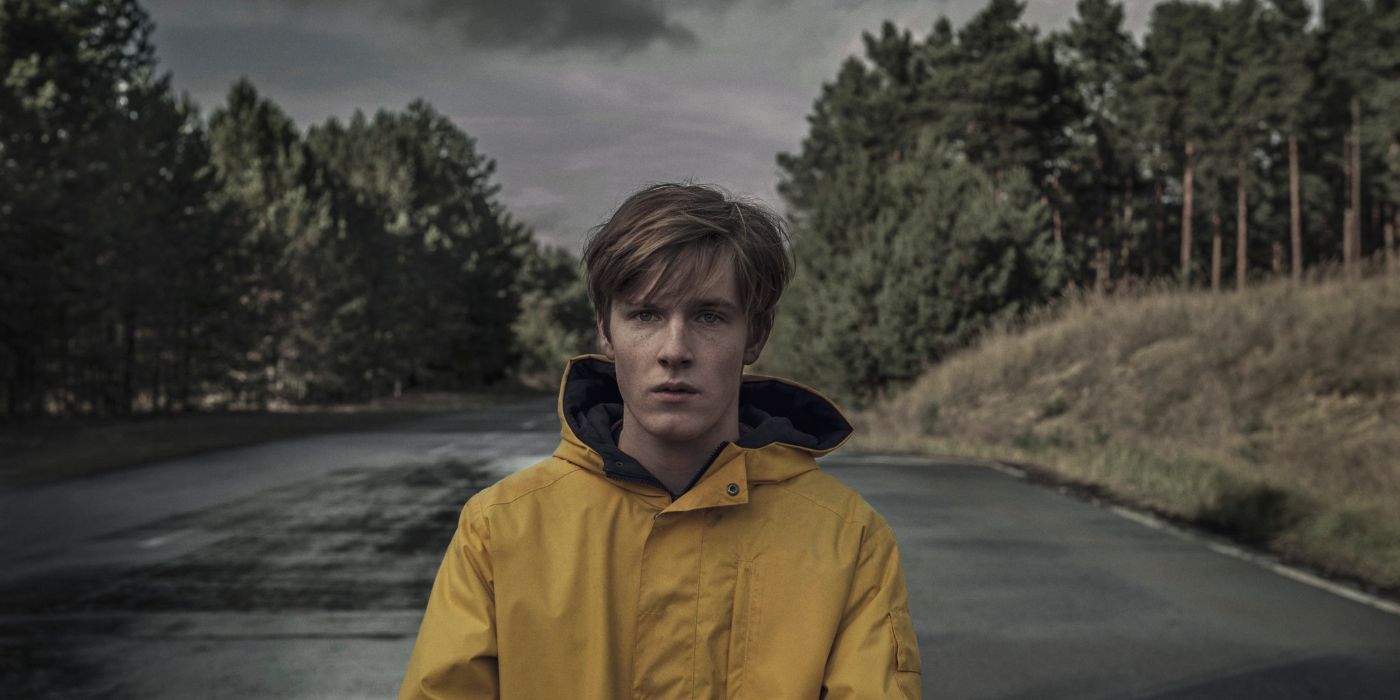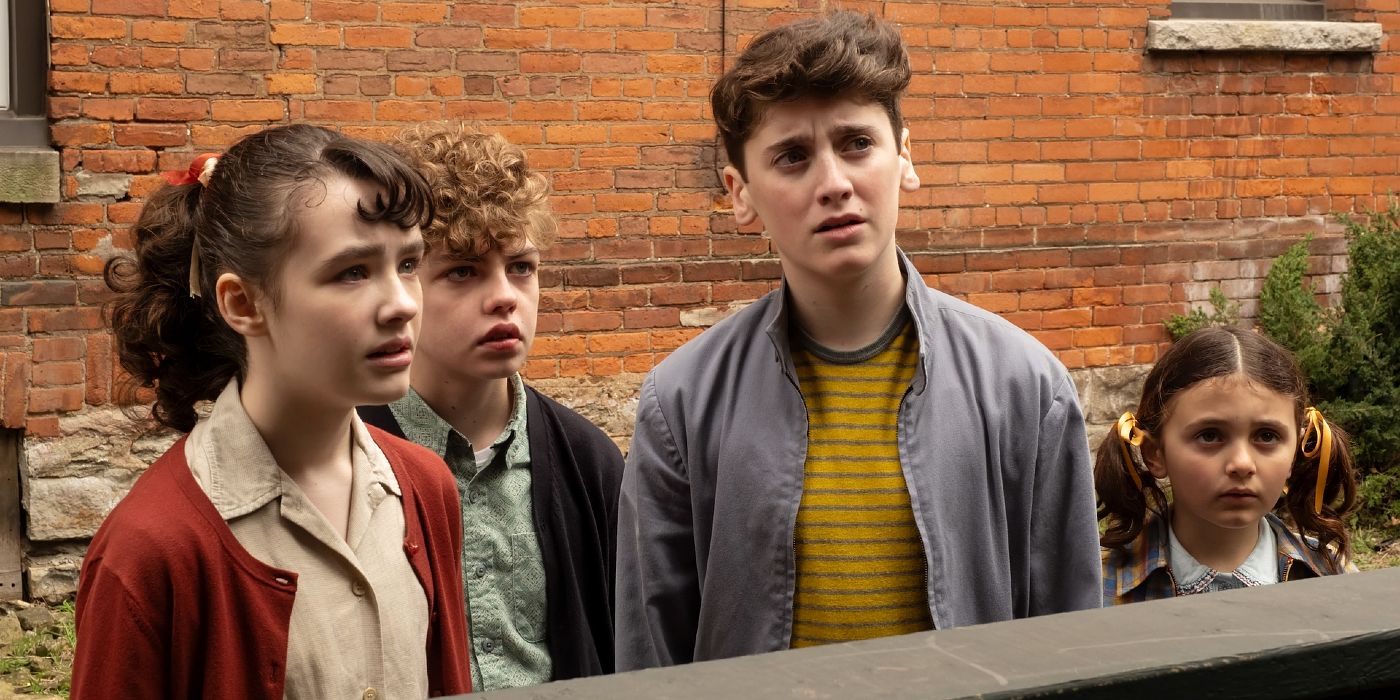
Two new TV shows are about to bring the chills. HBO’s series explores the terrifying beginnings of Pennywise the clown and how he haunted the town of Derry. Meanwhile, the Netflix show Dark creates a sense of dread in the fictional town of Winden, focusing on the unsolved disappearances of children and the frustration of those trying to find them.
This new show delves into complex ideas like free will, time travel, and the cyclical nature of events. Viewers who loved the intricate mystery, unsettling atmosphere, and emotional depth of Dark have been hoping for something similar, and It: Welcome to Derry could be it. While still rooted in the world of It, the series appears to be shifting focus from simple scares to a deeper exploration of how evil impacts families across generations, using the same carefully paced, fate-focused storytelling that made Dark so compelling.
Both Shows Turn Generational Trauma Into the Real Monster
As a huge movie and TV fan, I’ve always loved stories that mess with time, and Dark really blew my mind. It’s built around this amazing concept that the past, present, and future aren’t linear – they’re all tangled together in a repeating loop. It’s not just a time travel story, though. What really got to me was how it explored how trauma gets passed down through families. The show connects the years 1953, 1986, and 2019 in this really clever way, making it feel like the characters in this town, Winden, are stuck repeating the same 33-year cycle over and over.
The show Dark delves into the idea of the ‘bootstrap paradox’ – where trying to change the past actually causes the events you’re trying to prevent, creating a never-ending cycle. The show doesn’t just show inherited trauma, but trauma created by those attempting to stop it. As the story unfolds, connections between characters and their families become clear, revealing that the real antagonist isn’t a person, but this inescapable, repeating pattern itself.
The new series, Welcome to Derry, seems to be based on the same frightening idea as the original story, but with its own unique set of rules. It will explore the town’s dark past – the periods of intense trouble that Mike Hanlon investigates in the book. This includes actual historical events, like the tragic burning of the Black Spot, a nightclub that was targeted and destroyed because of racial hatred, and other unsettling occurrences.
The show deliberately takes place in the 1960s, during the Civil Rights movement and a time of Cold War fears, to make a strong point. It argues that Pennywise, the monster who appears every 27 years, isn’t the only source of evil in Derry. The true horror comes from the evils created by people – racism, prejudice, and the way the town has allowed these things to fester for generations. In Derry, the monster actually grows stronger by feeding on the town’s painful history and the wrongs people have committed – it’s a twisted connection where the town’s problems allow the monster to survive.
Like many stories, Dark used the Chernobyl disaster as a starting point, an event that remains impactful even now. This provided a realistic setting for a fictional accident at the nuclear power plant in the town of Winden. The show reveals how the plant’s director, Bernd Doppler, covered up a minor radioactive leak to prevent widespread fear. This leaked waste unexpectedly created a powerful form of a particle known as the “God particle,” which essentially powers the time travel technology at the heart of the show’s complex plot.
This is very similar to how It: Welcome to Derry is structured. That story is said to be inspired by the real-life trauma of racism in the 1960s, particularly the burning of the Black Spot, and uses this event to explain the source of Pennywise’s terrifying power. In both cases, a painful event from the past that a town tries to forget actually becomes the monster’s strength.
Atmosphere Is a Character In Both Winden and Derry
One of the most striking aspects of Dark was its distinctive visual style. The German town of Winden felt frozen in time and cut off from everything else. The show used a palette of muted, stone-blue colors, frequent rain, and dark forests to create this effect. The camera work was cold, precise, and often symmetrical, building a haunting and claustrophobic atmosphere that made the town feel like a prison.
The show’s visuals perfectly matched its ideas – a bleak world where everything hopeful had been extinguished by inescapable destiny and the repetitive nature of the time loop. The new series, It: Welcome to Derry, seems to be recreating that same unsettling feeling, but with a uniquely dark and twisted American style.
I’m hearing really interesting things about this show – it’s not what you’d expect. Apparently, it doesn’t immediately hit you with darkness. Instead, it lures you in with this incredibly vibrant, almost idealized version of 1960s America. Think classic cars, perfect outfits, and a picture-postcard small town. But that whole bright, cheerful look is just a front. The real creepiness, and the show’s actual style, is hidden beneath the surface, lurking in the shadows. It’s a clever visual trick, really.
The creators of the show, Jason Fuchs and Brad Caleb Kane, wanted the town to feel like a character itself. They portrayed this by contrasting the bright, cheerful surface—where the adults happily ignore the truth—with the town’s hidden darkness. The real Derry lies beneath, in the gloomy sewers, the decaying house on Neibolt Street, and the tight, enclosed tunnels.
This approach shares the same core idea as Dark, but uses a different visual style. Both shows emphasize that the town itself is where the danger lies. Winden presents its darkness openly, while Derry’s horror is hidden beneath a facade of perfection. The tension in Derry comes from the unsettling contrast between how nice the town looks and the corruption it actively conceals, as Fuchs points out.
Welcome to Derry and Dark Have Conflicts that Share Similar Ideas
What truly links Dark and Welcome to Derry isn’t just the fact that they both deal with trauma, but how they’re built. Both shows are cleverly designed mysteries, avoiding a straightforward, beginning-to-end storyline. Dark was particularly known for being complicated, and viewers often had to create charts of family connections and timelines to follow its 33-year repeating cycle. It wasn’t a story about fighting a bad guy, but rather a struggle against time itself.
What made Dark so popular was its intricate plot, which turned viewers into investigators trying to solve the mystery. Welcome to Derry is intentionally following the same approach. Director Andy Muschietti has said he wants to reveal the story piece by piece, like a puzzle, using the historical sections of Stephen King’s novel as those pieces.
The upcoming series tells its story through the eyes of two groups: a group of children and a unit of Black soldiers. Both are trying to make sense of a mysterious evil. This approach creates a complex, interconnected narrative similar to the show Dark, where the pleasure comes from seeing how different storylines gradually come together. The show’s most impressive feature, much like Dark, is its overall structure and how the story unfolds.
The show’s creators intend to tell the story over multiple seasons, moving backward in time. Producer Barbara Muschietti explained they plan to dedicate each season to a specific event, with each one taking place 27 years earlier than the last. These seasons will delve into the significant tragedies that have shaped the town of Derry, focusing on the years 1962, 1935, and 1908. The goal is to thoroughly explore Derry’s troubled history, much like the show Dark did with the complex past of Winden.
This setup mirrors the hopeless feeling that characterized Dark. Since Welcome to Derry is a prequel, viewers know the characters in 1962 are ultimately going to fail. They can’t truly defeat Pennywise, as he’s fated to return in 1989 to battle the Losers’ Club. Knowing this from the start turns their story into a study of fighting against something impossible to overcome.
Similar to the characters in Dark, those in Welcome to Derry are trapped in a story with a predetermined outcome. We, the viewers, learn early on about a character’s death, but see different versions of him existing across time. Their potential triumph isn’t about avoiding their destiny, but about how they respond to it. This embodies existential dread, a key theme that firmly establishes Welcome to Derry as a spiritual successor to Dark.
Read More
- Super Animal Royale: All Mole Transportation Network Locations Guide
- The best Five Nights at Freddy’s 2 Easter egg solves a decade old mystery
- bbno$ speaks out after ‘retirement’ from music over internet negativity
- Brent Oil Forecast
- ‘M3GAN’ Spin-off ‘SOULM8TE’ Dropped From Release Calendar
- Avengers: Doomsday Trailer Leak Has Made Its Way Online
- Katanire’s Yae Miko Cosplay: Genshin Impact Masterpiece
- Spider-Man 4 Trailer Leaks Online, Sony Takes Action
- Gold Rate Forecast
- Zerowake GATES : BL RPG Tier List (November 2025)
2025-11-01 06:38
